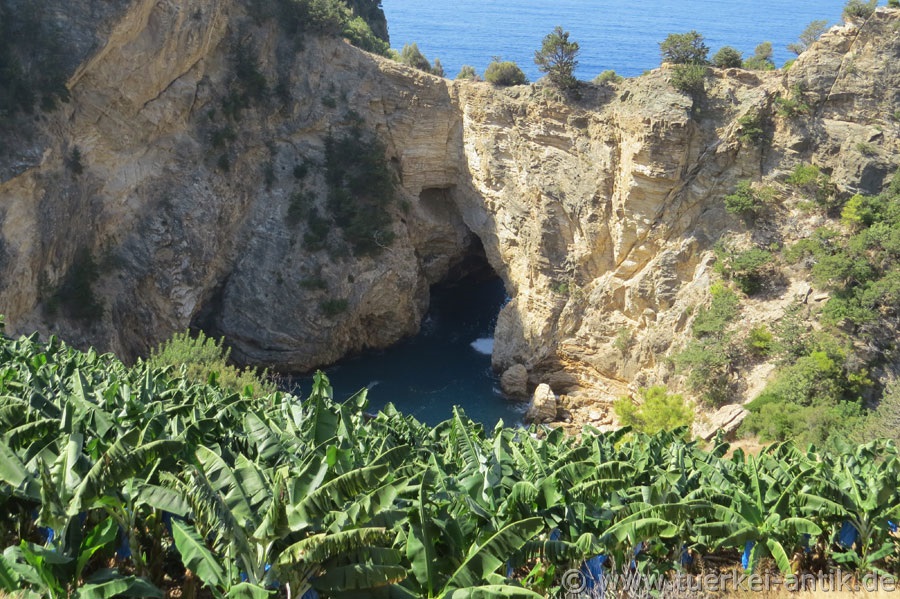 |
| Güney Kalesi (Antiochia ad Cragum) | |||
|
|
|
||
| Güney Kalesi | |||
|
The name of the city, Latin Antiochia ad Cragum, (translated: Antiochia on the cliffs) goes back to the location of the city: high above the sea on steep rocky cliffs. The present name of the castle "Güney Kalesi" refers to its proximity to the village of Güneyköy, 3 km away. The original name of the castle is not known. |
|||
|
|
|||
|
Finds on the castle hill prove that the rock was already used in Hellenistic times. The fortress was built and later extended by the Romans and Byzantines, at times by the crusaders who secured the sea route to the Holy Land. In the 12th century the area belonged to the Small Menian Kingdom. Under their rule, the castle complex - as well as the castle in Selinus, 18 km away as the crow flies (today Gazipaşa) - was further fortified. |
|||
|
|
|||
|
It is now considered certain that Antiochia ad Cragum was also one of the bases of the Cilician pirates. The so-called Cilician pirates were a naval power operating in the entire Mediterranean area, which dominated the eastern Mediterranean from the 2nd century BC until its subjugation by Gnaeus Pompeius Magnus in 67 BC. |
|||
|
|
|||
| Der versteckte Hafen der Seeräuber | |||
|
Below the castle hill lay a natural harbour, which could only be reached through an opening in the cliff. An ideal hiding place for the pirates. |
|||
| Photos: @chim, Monika P. | |||
| Translation aid: www.DeepL.com/Translator | |||
| Source: Wikipedia and others | |||
|
|
|||


